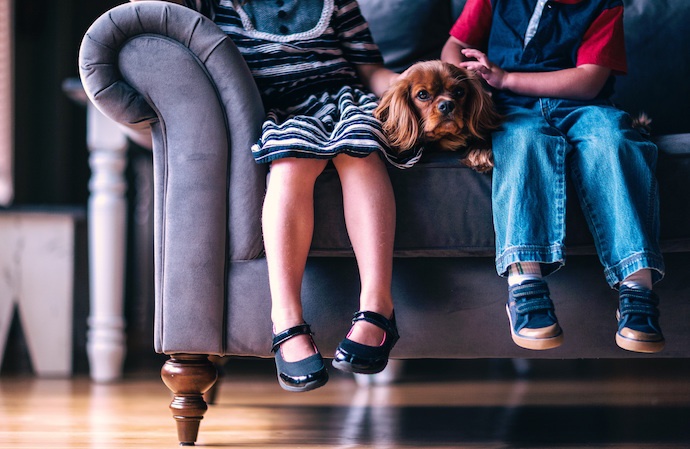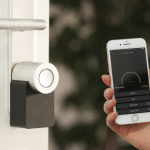Marketing your property as a pet-friendly vacation rental is a big decision, but the advantages should definitely give you “paws” for thought.
Statistics show that 67% of US households (or about 85 million families) own a pet and over half of pet owners travel with their furry pal at least once a year. That’s around 30 million potential bookings for dog-friendly rentals!
While 60% of hotels have a pet-friendly policy, according to the American Hotel Lodging Association, less than 15% of vacation rental properties welcome pets. Are you sensibly avoiding property damage by banning pets, or are you missing out on a huge untapped market?
One thing you can’t do is put your head in the sand and ignore the facts.
If you don’t clearly state your no-pet policy, you may have all the disadvantages (an apparent 20% of owners sneak pets into rental properties) yet reap none of the financial benefits.
Let’s dive in and take a look at the main pros and cons of a pet-friendly vacation rental!
Advantages of pet-friendly vacation rentals
1. Wider market appeal

In 2012, 29.1 million US vacationers traveled with their pets, creating a huge niche market for pet-friendly accommodation.
Solo travelers, families and retirees often prefer to include their pets in their vacation plans as they provide company and security for owners during a stay in a strange new place. Pet lovers also feel guilty at leaving their four-legged friends behind in boarding kennels, so are more than happy to pay extra for suitable pet-friendly accommodation.
Pet boarding costs typically start at $25 per pet per day, allowing you to add a healthy supplement to your prices for pet owners.
Many travelers enjoy active outdoor pursuits in spring and fall and specifically want to bring their pets along. This provides a high demand for pet-friendly accommodation in months that typically are not fully booked. Airlines, restaurants and hotels are increasingly pet-friendly, so by welcoming pets to your vacation rental, you can easily stand out from the crowd and attract more bookings.
2. Maximized profits
Vacation rental owners typically charge 20-30% more for pet-friendly properties. This is due to the higher demand for properties that welcome pets, particularly those that provide thoughtful extra touches such as dog dishes, feeding mats, chewable toys and a welcome treat.
Given that most hotels add $20-50 per stay for guests with pets in tow (with some charging up to $250), why not follow suit?
In addition, pet-friendly properties charge higher security deposits to cover carpet cleaning, hair removal and any damage, even if it’s just a few scratches. Typical security deposits range from $20 to $250. In the event that furniture or mats have to be cleaned or replaced, this sum will allow hosts to cover the charges at the pet owner’s expense.
3. Better feedback

Vacation rentals typically offer more space than hotel rooms, making them far more desirable for pet owners. A secure yard, pet-friendly parks, countryside walks and long beaches nearby will certainly appeal to dog-lovers. And happy clients equal higher satisfaction rating and feedback. These positive reviews will, in turn, generate more bookings for your property in the future.
Pleased pet owners are also far more likely to become repeat guests in the future and are likely to spread the word to other travelers looking for pet-friendly accommodation options.
Disadvantages of pet-friendly vacation rentals
1. Noise
On the negative side, allowing pets to stay can cause some noise disturbance, particularly in apartments or multi-unit properties. After all, nobody wants a meowing cat or a yapping dog keeping them up all night. If your property has a shared entrance or communal gardens, unfamiliar dogs may be considered a nuisance by other owners.
Condo association regulations may limit the size or number or may even ban pets, so consider your neighbors carefully and check the small print before marketing your vacation rental as pet-friendly.
2. Allergies
Some future guests may have allergies to fur or pet dander, traces of which may be left behind even after the deepest clean. Unfortunately, fleas and ticks may also take up residence at your rental even after their four-legged host has departed.
Pet-friendly properties must be inspected for damage or evidence of infestation before releasing the security deposit. You should instigate strict flea control routines and shampoo all carpets and rugs after every guest, particularly if the incoming guest does not have pets traveling with them.
3. Damage

Cleaning procedures must include routine inspection for damage, including chewed cables and scratched doors. You may want to limit pets by size/weight or quantity to lower the risk of pet damage. However, big dogs generally tend to have a mellower disposition and are less prone to chewing than smaller dogs.
It’s also imperative you include clear house rules with your rental which state where pets can and cannot go. For example, you might want to impose a rule that pets are not allowed in bedrooms or on the furniture to minimize damage possibilities.
Many vacation rental businesses may naturally be reluctant to market their property as pet-friendly. However, welcoming pets (and their owners) has been proven to deliver better occupancy levels and higher profits.
Turning your property into a dog-friendly rental
Now you know the pros and cons of accepting pets, you may be thinking long and hard about making your property dog-friendly. Take a look at these useful pointers to truly pet-proof your vacation rental.
1. Set clear rules and provide instructions for guests
For any guests (not just those traveling with pets), it’s important to set out your house rules and give instructions on any specific topics regarding pets.
Your house rules may take the form of a print-out, a poster hung on the wall or even a PDF that you send to your guests before check-in. The crucial thing is you have them. In your house rules, you should also include information on any penalties or security deposit deductions in case of violations – always making sure that your wording is crystal clear.
2. Use animal-friendly flooring
While you’re unlikely to refurbish your rental simply to adapt it better to animals, consider the suitability of the flooring in your property before you change your listings to “dog-friendly”. Some options are much more suitable for allowing pets as they are scratch-resistant and stain-proof, making sure they always scrub up nicely after each guest departs.
For example:
- Vinyl
- Cork
- Linoleum
- Tile and stone
- Laminate
- Hardwood
In general, carpets are not recommended for pet-friendly homes. Not only can accidents happen with even the most house-trained creatures, but also it can be difficult to clean all the animal hair from these types of materials.
3. Install child gates
Child gates are a great idea for restricting pet access around your property. For example, if you don’t want pets to go upstairs, add a child gate at the bottom of the stairs. This will act as a physical reminder to guests that certain rooms are off-limits for their furry companions. In addition, these temporary devices can easily be removed for any guests who aren’t bringing pets along.
4. Devise a pet-friendly sofa situation
It can be very difficult to keep dogs and other pets off sofas when they’re used to climbing them at home. The best way to protect yourself (and your sofas) from potential doggy damage is by providing dog covers, using fabric protection to prevent stains, buying a sofa with pet-friendly fabric (such as heavy cloth) or even using full sofa covers which you can remove and wash from time to time.
5. Kit out your home with pet supplies
Traveling with pets can already be hard work. Not only do guests need to sort their own documents and cases, but they also have to worry about pet passports and packing all the essentials the animal, too.
You can show you really care about making your home welcoming not only to human guests but animal ones by providing some or all of the following:
- Water/food bowls
- Dog towels
- Dog litter pickup bags
- Leashes
- Small supply of dog food and treats
- Doggy bed
- An outdoor spending area
- A hosepipe
- Bones
- Pet toys
6. Keep cleaning products out of pets’ reach
Animals can be curious, and they’ll sniff around all your home looking for treats. Be sure to store any hazardous cleaning products well out of reach so no accidents can happen.
7. Increase your damage deposit and add a pet fee
Most travelers are willing to pay extra for a pet-friendly vacation rental. That said, pets can possibly cause more damage than other guests, so be sure to cover your back. You can do this by adding a refundable damage deposit that’s only applicable for guests bringing animals, as well as an additional “pet fee” which will help cover those supplies above.
8. Give guests a dog-friendly area guide
Travelers with dogs have another specific requirement: they need to walk! Prepare a guide of all the dog-friendly beaches, parks and local walks they can take so they don’t have to put in hours of research themselves. As well as this, think about providing a phone number for a local taxi service which accepts pets and details of local veterinary practices in case of emergencies.
Pet-friendly vacation rentals are on the rise. Besides being able to increase your rates and appeal to a wider market, there are plenty of other advantages to accepting them at your home. In fact, many travelers with pets will return to a property if everything went smoothly the first time round. However you feel about animals, there is no denying that this trend will only continue. Is it time to jump on the pet-friendly bandwagon?


